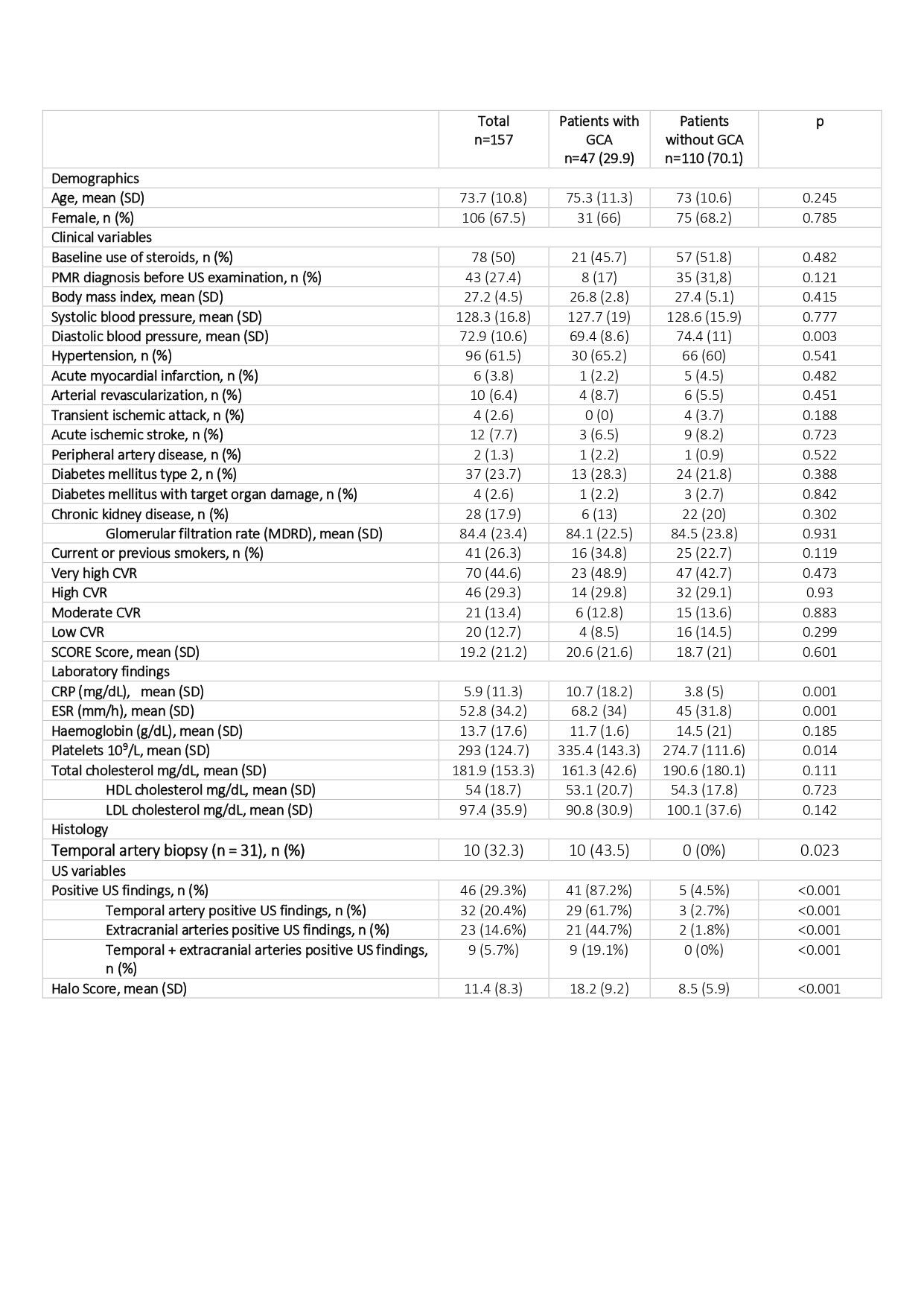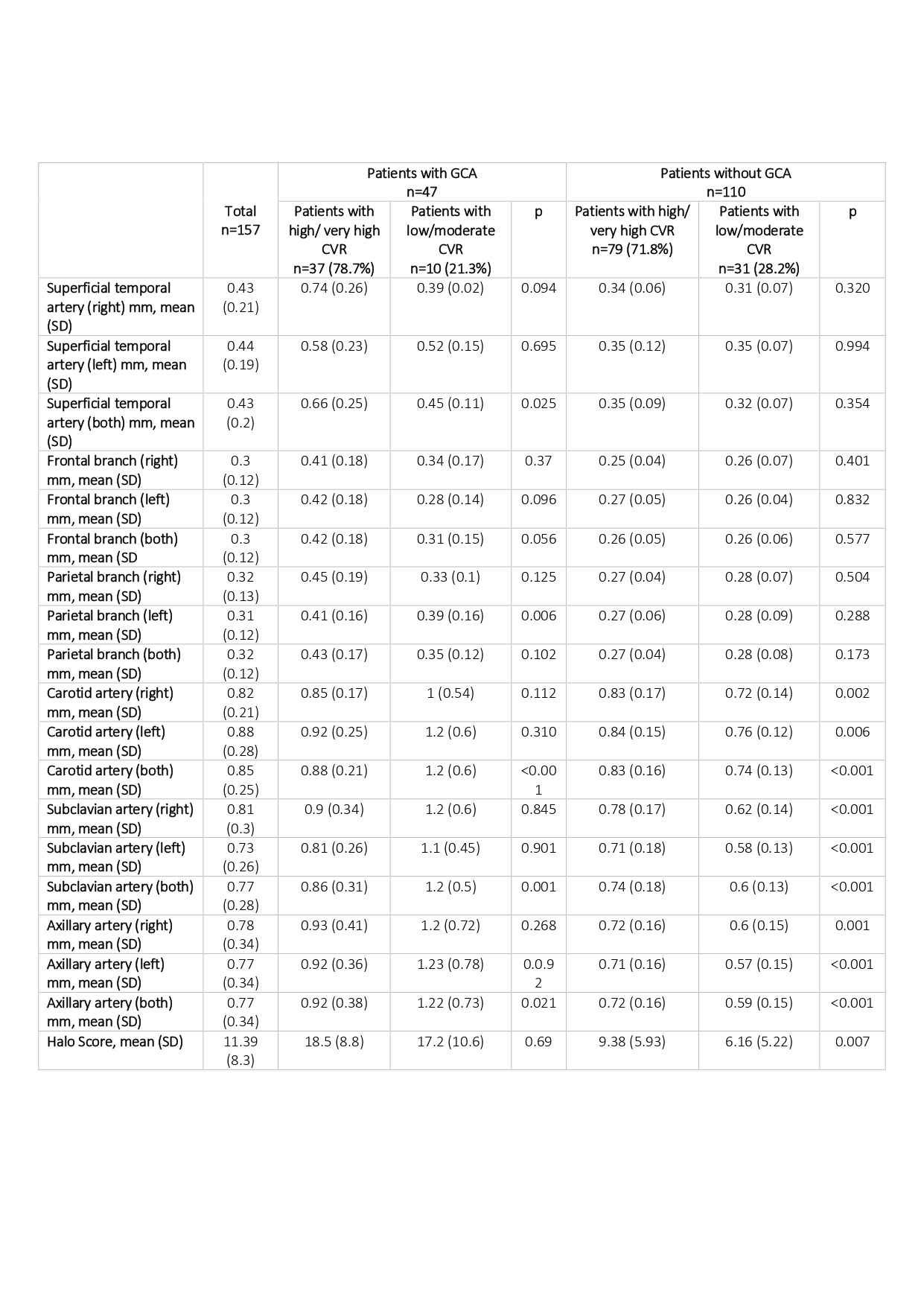Session Information
Session Type: Poster Session C
Session Time: 1:00PM-3:00PM
Background/Purpose: To evaluate the impact of cardiovascular risk (CVR) on the diagnostic accuracy of the ultrasonographic (US) Halo Score in patients with suspected giant cell arteritis (GCA)
Methods: Retrospective observational study of patients referred to our US fast track clinic with suspected GCA for a 2-years period. The intima media thickness (IMT) of cranial and extra-cranial arteries and the Halo Score was determined to assess the extent of vascular inflammation. The European Society of Cardiology Guidelines on CV Disease Prevention were used to define different categories of CVR and patients were classified according to the Systemic Coronary Risk Evaluation (SCORE). The gold standard for GCA diagnosis was clinical confirmation after 6-month follow-up.
Results: Of the 157 patients included, 47(29.9%) had GCA after 6-month follow-up. Baseline characteristics of patients are shown in Table 1. Extra-cranial artery IMT was significantly higher in patients with high/very high CVR than in those with low/moderate CVR, but only among patients without GCA. Non-GCA patients with high/very high CVR had also a significantly higher Halo Score in contrast with low/moderate CVR [9.38(5.93) vs 6.16(5.22); p=0.007] (Table 2). The area under the ROC curve of the Halo Score to identify GCA was 0.835 (CI95% 0.756-0.914), slightly greater in patients with low/moderate CVR (0.965 [CI95% 0.911-1]) versus patients with high/very high CVR (0.798 [CI95% 0.702-0.895]) (Figure 1). A statistically weak positive correlation was found between the Halo Score and the SCORE (r 0.245;p=0.002).
Conclusion: Elevated CVR may influence the diagnostic accuracy of the US Halo Score for GCA. Thus, CVR should be taken into consideration in the US screening for GCA.
Abbreviations: GCA: giant cell arteritis; PMR: polymyalgia rheumatica; CRP: C-reactive protein; ESR: erythrocyte sedimentation rate; US: ultrasound; HDL: high density lipoprotein; LDL: low density lipoprotein; SD: standard deviation
To cite this abstract in AMA style:
Molina J, LOPEZ GLORIA K, Castrejon I, Nieto González J, Martinez-Barrio J, Anzola Alfaro A, Rivera J, Älvaro-Gracia J. Impact of Cardiovascular Risk on the Diagnostic Accuracy of the Ultrasound Halo Score for Giant Cell Arteritis [abstract]. Arthritis Rheumatol. 2022; 74 (suppl 9). https://acrabstracts.org/abstract/impact-of-cardiovascular-risk-on-the-diagnostic-accuracy-of-the-ultrasound-halo-score-for-giant-cell-arteritis/. Accessed .« Back to ACR Convergence 2022
ACR Meeting Abstracts - https://acrabstracts.org/abstract/impact-of-cardiovascular-risk-on-the-diagnostic-accuracy-of-the-ultrasound-halo-score-for-giant-cell-arteritis/



